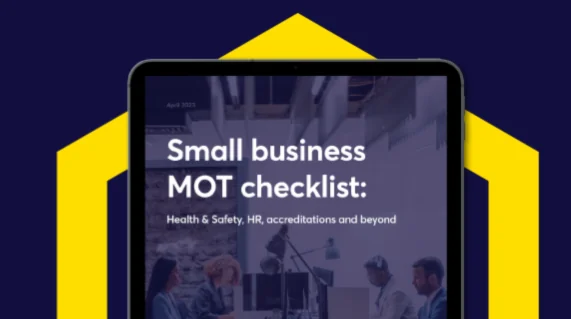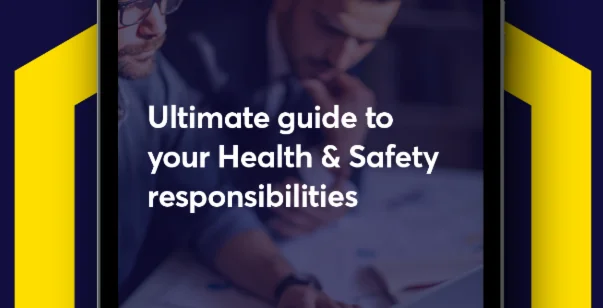The construction industry, a very important industry in our ever-developing world, is actually home to a fair few significant safety challenges. This is why safety should be top priority – and personal protective equipment (PPE) is one of the most critical components of site safety. PPE serves as the last line of defence against injuries and illnesses, so it’s proper use and management is essential.
Effective PPE management goes beyond just handing out equipment, it should include thorough risk assessment, the right selection, training, and maintenance, ensuring the protection of workers.
In this blog, we’ll take you through the importance of PPE in construction, the types of PPE, common site hazards, legal obligations, managing PPE effectively and much more.
What is PPE in construction?
Personal protective equipment, or PPE, in the construction industry refers to any clothing, equipment, or device designed to protect workers from potential hazards on construction sites. This could be anything from basic protection in the form of a hard hat or safety goggles, to more specialised equipment like respiratory protection.
The role of PPE is to minimise the risk of injuries and illnesses resulting from exposure to various dangers present on construction sites. Effective PPE management doesn’t just help in safeguarding your workforce but also ensures compliance with Health & Safety regulations, reducing the risk of costly incidents and legal liabilities.
The types of PPE in construction
The construction industry requires different types of PPE to cope with the multitude of hazards workers may encounter. The PPE that you choose will depend on what potential hazards are on site, which is why it’s important to do a risk assessment before deciding.
As there are a multitude of options for PPE, below is a breakdown from head to toe PPE options, with some examples of each.
Head protection
- Purpose: To protect the head from impacts, falling objects, and electrical hazards.
- Examples: This could be in the form of a standard hard hat for general impact protection or electrical insulating hard hat for protection against electrical hazards
Eye protection
- Purpose: To shield the eyes from dust, debris, chemical splashes, and intense light.
- Examples: Safety glasses with side shields for general impact protection or chemical splash goggles for protection against liquid hazards.
Hand protection
- Purpose: To protect the hands from cuts, abrasions, chemical burns, and extreme temperatures.
- Examples: For general handling and abrasion resistance, leather work gloves will do the trick. Nitrile gloves are good for chemical resistance.
Foot protection
- Purpose: To protect the feet from impacts, punctures, slips, and electrical hazards.
- Examples: Steel-toe safety boots for impact and crush protection, or electrical hazard safety boots for protection against electrical shock.
Hearing protection
- Purpose: To reduce noise exposure and prevent hearing loss.
- Examples: Foam earplugs for general noise reduction or over-the-ear ear defenders for higher noise reduction.
Respiratory protection
- Purpose: To protect against inhaling hazardous substances like dust, fumes, and gases.
- Examples: Filtering face masks for dust and particulate protection.
High-visibility clothing
- Purpose: To ensure workers are visible, especially in low-light or high-traffic areas.
- Examples: High-visibility vests for general visibility.
Health & Safety hazards on a construction site
Construction sites are rife with hazards that can compromise workers’ health & safety. Understanding these risks and putting the right protective measures in place is vital, so here’s a quick breakdown of what counts as a Health & Safety hazard and common hazards found on construction sites.
H3: What is a Health & Safety hazard?
Health & Safety hazards include a wide spectrum of risks that can lead to injury, illness, or even death in the workplace. In the context of construction, the very nature of the work, involving heavy machinery, work at significant heights and exposure to diverse materials creates a few potential dangers.
Construction sites can change on a daily basis with new hazards cropping up as projects progress. This means that you need to constantly survey your construction site to stay on top of any potential hazards that may come up. Some of these hazards include:
Working at height
Falls from a height are a leading cause of injury and death in construction. You can learn more in our blog on the risks of working at height. The risk is increased by factors such as unstable surfaces, weather conditions, and lack of fall protection systems.
PPE options that you could use for this hazard would be full-body harnesses, lanyards and lifelines that would prevent users from falling from heights.
Slips, trips, and falls
Uneven surfaces, debris and wet conditions can lead to accidents These accidents can lead to sprains, fractures, and other injuries.
PPE options that you could use for this hazard would be slip-resistant footwear to provide traction on slippery surfaces. You could also include proper footwear with ankle support.
Noise Exposure
Prolonged exposure to high noise levels can cause hearing loss. Read our control of noise at work guidance for employers.
PPE options for this hazard would be earplugs or ear defenders, and make sure ear protection fits correctly. This will reduce the level of noise being heard and protect hearing in the long run.
Hazardous substances
Handling chemicals and materials like asbestos can pose some serious health risks, such as respiratory problems, skin irritation, and long-term health issues. To combat this, consider carrying out an asbestos risk assessment.
PPE options here could be face masks, chemical-resistant gloves or eye protection. This will prevent the substances from entering your body where they can cause some real harm. As with ear protection, make sure that face masks, gloves and eye protection fit properly, to make sure no chemical substance can make contact.
Electrical hazards
Contact with live wires or faulty equipment can result in electric shock or burns.
PPE to use here could be insulated gloves and footwear or voltage rated tools. This would act as a barrier against electrical shocks. Again, correct fitting is vital here!
Manual handling
Lifting, carrying, and moving heavy or awkward objects can strain muscles and joints, leading to musculoskeletal disorders.
PPE options for this hazard would be support belts, proper gloves to improve grip and appropriate safety footwear. While heavy lifting is something that is hard to avoid, you should make your employees feel as comfortable as possible if heavy lifting is needed.
Mental health
Hazard: High stress environments, long hours, and pressure can negatively affect worker wellbeing, and the construction industry is particularly bad for this. According to a study done by PBC Today, an alarming 83% of construction workers have struggled with mental health issues related to work.
While there are no PPE options in the traditional sense, providing access to mental health resources is important. Some great examples of mental health resources for construction workers are Construction Working Minds or Mates in Mind. Creating a supportive work environment and promoting open communication.
Understanding the Personal Protective Equipment at Work Regulations 1992
Ensuring workplace safety through effective PPE management is a legal and ethical non-negotiable for employers. The Personal Protective Equipment at Work Regulations 1992 set out the responsibility for employers to provide appropriate PPE to make sure their workers are safe.
Employer responsibility for PPE
Due to the regulations above, employers and duty holders have a few key responsibilities when it comes to managing PPE, including:
Carrying out Risk assessments: This process involves identifying hazards, evaluating their potential impact, and determining the necessary PPE.
Providing the right PPE and fitting it properly to each worker: PPE suitable for the identified risks should be provided to employees free of charge. Employers are also responsible for ensuring that PPE is properly maintained, regularly inspected, and replaced when necessary.
Give training on proper PPE use and maintenance: Employers must provide in depth training on the correct use of PPE. This training will ensure employees understand how to use their equipment effectively. You should also encourage employees to maintain their PPE equipment and let you know if there is anything that needs to be replaced. If something is damaged, it should be reported and replaced immediately.
Report work-related accidents or incidents to the Health and Safety Executive (HSE): Employers must report work-related accidents or incidents to the Health and Safety Executive (HSE). This reporting allows the HSE to identify trends, implement corrective measures, and continue to improve the standard of workplace safety.
How to select the right PPE for your construction site
Choosing the right PPE means you’ll need to carefully consider a few factors to ensure maximum protection and compliance with safety standards. Consider:
- Job requirements: Match PPE to specific tasks and hazards. For example, if there is a hazard of falling objects, it would be a good idea for you to supply employees with hard hats and implement appropriate signage.
- Size, fit and weight: PPE needs to be comfortable and has to fit properly to encourage consistent use. If the PPE does not fit well and is uncomfortable for employees to use, they will be less likely to use it. For example if the safety shoes provided are too small for them, or if their safety helmet keeps falling off.
- Certification: Choose products that have a CE or UKCA mark to meet proper safety standards.
- Training: Provide thorough training on the correct use of PPE. PPE doesn’t make you invincible, so make sure you provide training on the limitations of PPE too. Showing employees how to use PPE correctly will help them stay safe and help your business remain compliant.
Compatibility: Make sure multiple pieces of PPE can be used together without compromising safety. If glasses are needed to prevent any damage to someone’s eyes, make sure that they can be worn while a hard hat is being used to protect against potential falling objects.
Do you need help effectively managing PPE?
By understanding the ins and outs of PPE, conducting thorough risk assessments, and adhering to legal obligations, employers can create a safer environment for their workforce. Investing in proper PPE, training, and maintenance not only protects your workers but also protects your business from potential liabilities and disruptions.
We’re here to help you keep your construction site compliant and safe. Want to know how to manage PPE effectively? Why not download our Personal Protective Equipment (PPE) checklist, and explore our Health & Safety software, PPE e-learning courses, risk assessment templates, and method statement templates.
Or, if you want to chat to an expert, contact us today on 0161 660 1792 to learn more and take the first step towards a safer workplace.





